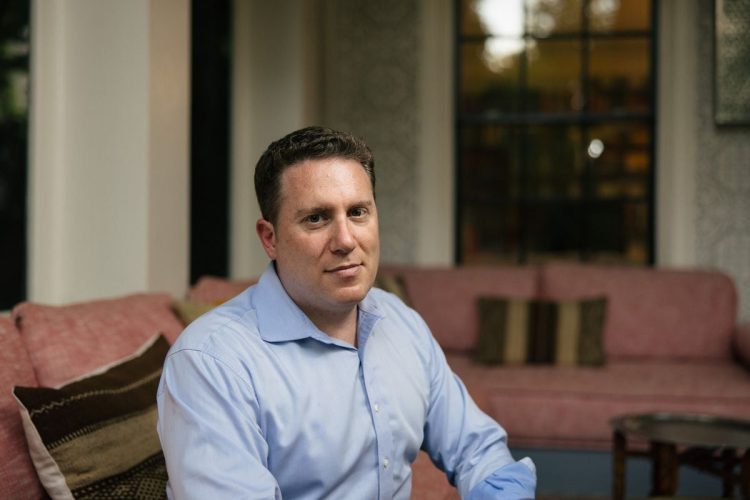Ben Smith (New York, 1976) has experienced the main efforts of journalism to survive in the Internet era: he started with blogs in Politicalthen went on to exploit virality on social networks with BuzzFeed News and from there he rose to become a media columnist. The New York Times, where the success of the new paywalls experienced. He now he is co-founder of Semafora global medium that aspires to become a reference for the current era, which calls for more transparency and more natural voices.
Before the summer he published a book about these two decades titled, precisely, Traffic (at the moment there is no planned translation into Spanish). “Traffic” marked the last two decades of the media, and now they see how that era is ending. The networks that channeled that traffic, especially Facebook, have seen that journalism is not a business. What’s coming now? Smith reflects in this interview, done by videoconference from New York, about the end of this era. Not only traffic is dying, but also social networks as a public square. There are many deaths to manage.
Ask. Will networks soon die as a center of public debate?
Answer. It’s already happening. With Facebook it is obvious. And with Twitter/X it’s been happening for years, you just don’t really realize it. When was the last time a celebrity put something on X? Maybe five years ago. The famous people are gone. The majority of athletes left. Most of the companies have disappeared. We’re just left with fucking depraved journalists and politicians yelling at each other. It will still be a great place to watch sports. Maybe they can build a big sports betting business. It doesn’t mean it’s going to disappear, but we are in a cultural change.
Q. It will be a smaller place.
R. It’s just not what it was two years ago. I still like it [tiene 341.000 seguidores]. I have no complaints. I wish I was better as a consumer. For most people, the idea that to find out the news you have to enter an asylum is uncomfortable, it is not a good experience.
Q. What alternatives are there today?
R. TikTok is an amazing platform, but it’s obviously not for news. When I say “news,” I’m sort of talking about the sociopolitical cultural conversation among the elite. That doesn’t happen on TikTok. Many other interesting things happen there, but it is more of an entertainment platform.
Q. The mail and newsletters They have become another possible alternative.
R. Increasingly. Email is a primary distribution channel and I certainly get a lot of my news now via newsletters. Which also seems strange: it’s a technology from the 90s. I don’t think email is the end-all, be-all of human technology.
Q. Even Google and SEO survive as distribution channels.
R. Google remains important to publishers, especially media outlets that focus on lifestyle. But I guess Google isn’t such an inspiring source of information anymore.
Q. Traditional networks are dying, TikTok is something else, newsletters They don’t scale, Google is old. Have the media distribution channels to make yourself known become complicated?
R. It’s a lot harder to get noticed than it used to be. I feel very lucky to have launched Semafor when Twitter still existed for many news consumers who have since left. We advertised on Twitter before launch [en enero de 2022] and it was effective.
Q. It is more difficult to find new sources of information.
R. It’s true. It is very fragmented. It’s harder to be a news consumer now. It’s not that anyone wants to go back to having a single font. But now social media is like walking through a nuclear wasteland searching for radioactive nuggets.
Really enjoying the book Traffic by Ben Smith, although the font makes it look a bit like the title is actually commanding someone to do something pretty unseemly to poor Ben. pic.twitter.com/SiV9CFWiaD
—Shawn Fury (@shawnfury) May 12, 2023
Q. Large media have the advantage of attracting due to their weight and tradition.
R. Yes, but it’s still a big problem. I imagine it’s also a big opportunity for publishers because it’s a big deal for consumers. I don’t think there is an easy solution.
Q. What about the media homepage?
R. They have been more resistant than we expected.
Q. It sounds nostalgic.
R. We are in a moment of great nostalgia for the old days. The New York Times He tells you to come into his walled garden, where you can only read his articles, and you can share his ideology and everything will be simple again. I am sure that EL PAIS offers the same. Then other media say: “We are going to continue exploiting the radioactive wasteland of social networks and get some uranium.” But the real answer has to be that we have to find some way to regain trust in the institutions that preceded social media. I also don’t think anyone wants to go back to a world where you only see one medium and have to trust it. People are already used to having multiple perspectives and it’s not going away.
Q. Why didn’t social media work?
R. The networks believed that their business and our journalism would be aligned with where they wanted to go. We made a wrong prediction about their decisions. To understand this ecosystem you have to know that people thought of cable television as a model: it was a new type of distribution. As they began to compete with each other, they would need better and better content and then they would start paying for the content. So if we were going to supply them with content, we would start charging. That’s what never happened. They simply decided that they would rely on user-generated content forever. Mainly because it is free, but also because political news and politics became a huge challenge for the platforms.
Q. The money that traffic promised never quite reached the media.
R. No. Facebook built a better channel for that money. Journalism is not a particularly efficient way to reach large audiences for little money.
Q. Journalism was not worth it for the platforms.
R. You have to forget about them. The Silicon Valley dream totally excludes professional journalism. It makes your products irrelevant. It’s a mix of ideology and probably something more practical, because it’s more fun to have things for free than to have to pay for them.
Q. Isn’t there a technological solution for journalism?
R. There is this kind of fantasy in the industry that for journalism there would be some kind of silver bullet that would solve everything. Tech entrepreneurs love the idea of discovering the secret and having it be “x”. But the journalism business doesn’t work like that. The information business is difficult, even more so now. We are successful companies that do a lot of different things, we do them quite well, we sell advertising, we sell subscriptions. There is no sexy answer to the big financial questions. It’s more about executing very well, working hard, building an audience and then doing different things. To some extent you do what makes sense and works. It is less ideological. I know it’s a boring answer but you only have to look at media companies that have really been successful. Disney, for example. What is your business? There are 15 different things. It’s still fun. They are the best media company out there and they are still a disaster.
Q. One of the answers of Semafor Now it’s about being more transparent. Can an organization like the New York Times?
R. It is a great challenge. Their strength is actually their brand and they require a certain homogenization. They are doing many different things. But if you look at the news article it’s a kind of black box: it’s a set of statements and some of them are facts and some of them are analysis and maybe it’s the journalist’s analysis, or maybe it’s the editor’s type of analysis, or maybe it’s the official position type of the publication. From the outside you don’t really know which is which. Do you know that a journalist wrote it? No, you don’t know if every word is his and what his opinion is, although you can guess based on who he quotes and how he arranges it.
Q. Was this your experience in the Times?
R. When I was around, only a couple of people were allowed to write normally: the media columnist [el puesto de Smith] and the municipal columnist. Historically, those two can write like normal people, but everyone else has to write like ChatGPT. I don’t think it’s a very contemporary way of communicating. It leaves readers confused about who they are listening to.
“It’s harder to be a news consumer now. “Social networks are like walking through a nuclear wasteland looking for radioactive nuggets”
Q. That’s why they work newsletters.
R. They are simply more natural. They let the reader know who they are listening to.
Q. What has journalism gained from the era of virality and clickbait?
R. Journalism in the United States was more interesting when there were 10 newspapers in each city. It was more entertaining and more emotional. Then there was an intermediate period where the newspapers were consolidated into a few headlines. There were monopolies and they became very boring. But it was only a moment.
Q. So we go back to something like that even for the big ones like the New York Times.
R. Yes, more fun, more human, also more politicized, more left-wing.
Q. And the headlines made to click, the clickbait?
R. I do not accept that these headlines are bad. The headlines have always been intended to be interesting and make you read the articles. There have been crazy headlines in history that are famous. I have never understood so many complaints with these headlines.
Q. The problem is promising more than you offer.
R. Sure, that’s bad. Misleading headlines are clearly bad. But I think people use the word clickbait to refer to headlines other than ‘Congress will meet tomorrow to consider serious things’. And it’s not that.
Q. Can a business be built today with those headlines?
R. If you keep the costs very very low, yes. You can make money and build a traffic-based media. But everything has to be very cheap. So you can’t do journalism.
You can follow EL PAÍS Technology in Facebook and x or sign up here to receive our weekly newsletter.
Subscribe to continue reading
Read without limits











